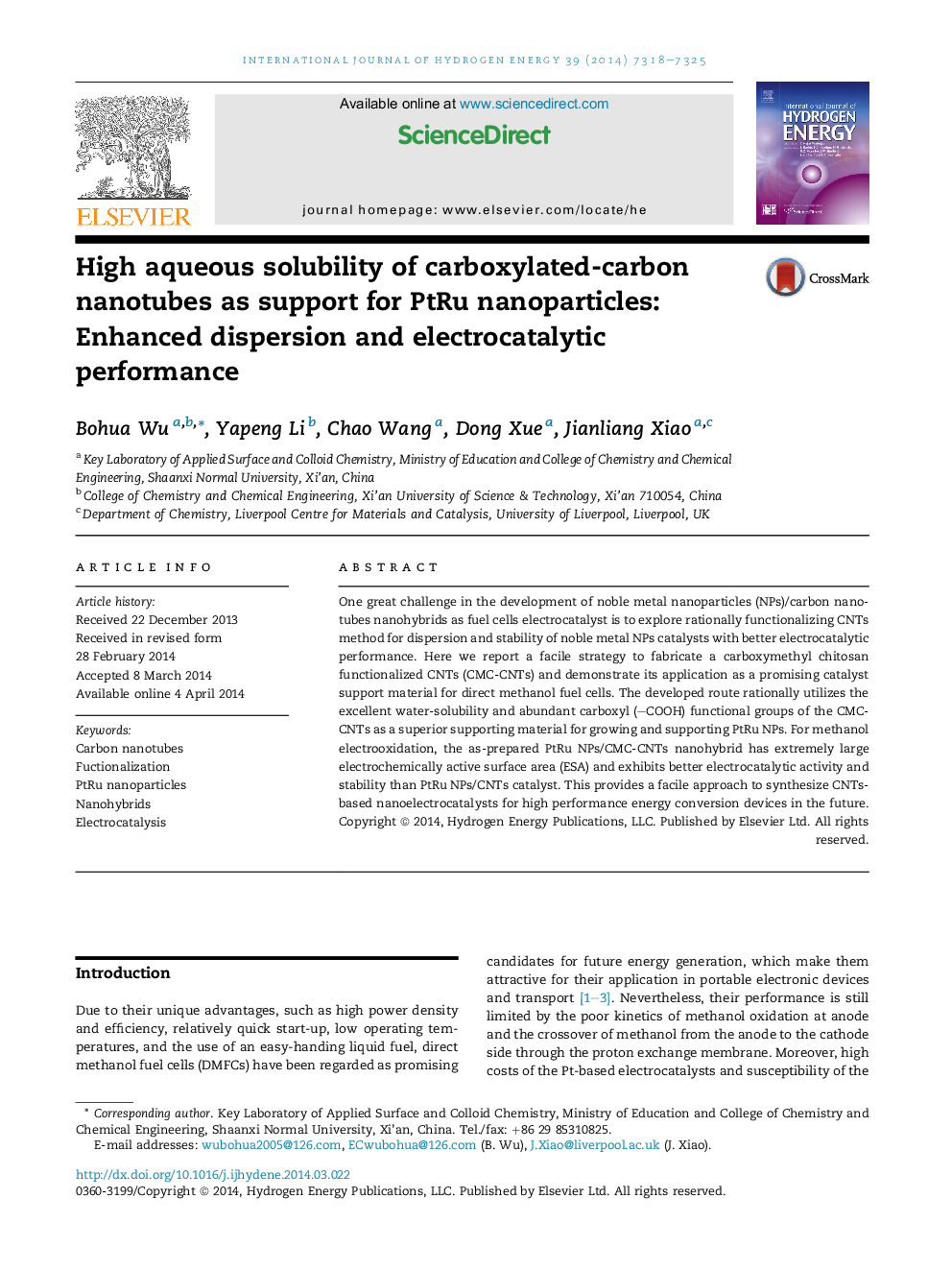| Article ID | Journal | Published Year | Pages | File Type |
|---|---|---|---|---|
| 1272706 | International Journal of Hydrogen Energy | 2014 | 8 Pages |
•Carboxymethyl chitosan is used to tailor CNTs surface chemistries.•PtRu nanoparticles on CMC-CNTs show improved dispersion and smaller particle size.•Methanol electrooxidation was studied on PtRu NPs/CMC-CNTs catalysts in acid media.•PtRu NPs/CMC-CNTs nanohybrids showed a higher activity for methanol electrooxidation.
One great challenge in the development of noble metal nanoparticles (NPs)/carbon nanotubes nanohybrids as fuel cells electrocatalyst is to explore rationally functionalizing CNTs method for dispersion and stability of noble metal NPs catalysts with better electrocatalytic performance. Here we report a facile strategy to fabricate a carboxymethyl chitosan functionalized CNTs (CMC-CNTs) and demonstrate its application as a promising catalyst support material for direct methanol fuel cells. The developed route rationally utilizes the excellent water-solubility and abundant carboxyl (–COOH) functional groups of the CMC-CNTs as a superior supporting material for growing and supporting PtRu NPs. For methanol electrooxidation, the as-prepared PtRu NPs/CMC-CNTs nanohybrid has extremely large electrochemically active surface area (ESA) and exhibits better electrocatalytic activity and stability than PtRu NPs/CNTs catalyst. This provides a facile approach to synthesize CNTs-based nanoelectrocatalysts for high performance energy conversion devices in the future.
Graphical abstractBased on functionalization of carbon nanotubes with carboxymethyl chitosan, PtRu NPs were highly dispersed on the high aqueous solubility of carboxylated-carbon nanotubes surface and showed superb performance for methanol electrooxidation.Figure optionsDownload full-size imageDownload as PowerPoint slide
